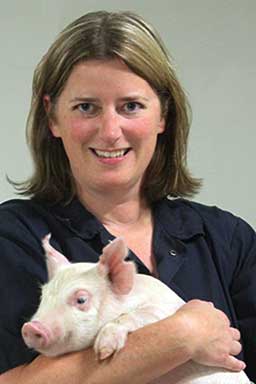In 2005, the Journal of Swine Health and Production launched an initiative to expand accessibility to the scientific knowledge published in the journal by including manuscript summaries that are translated into French and Spanish, along with the full English manuscript. I am pleased to report that this is still practiced by the journal today, and it would not be so successful without the hard work and commitment of our translators. Thank you to our current translators Sandra Pérez and Dr Laura Batista (Spanish) and Dr Serge Messier (French). Expanding the availability of the published information beyond English is a great way to increase the impact that the journal, and the work of our authors, can have on our field.
I am delighted to report that another new initiative has been implemented at the journal. The JSHAP has recently introduced a policy that allows foreign journals to submit an application for permission to translate and reprint a full (previously published) JSHAP manuscript in a different language. I consider JSHAP to be a leading resource for swine practitioners and swine researchers worldwide – and, I hope you do, as well. Broadening the scope of the journal through approved translations and reprints will enable it to continue to excel in a leadership capacity in disseminating swine research and information to the international veterinary community. There are some criteria that the requesting journal must meet, of course, but the intent is to increase the accessibility of our peer-reviewed publications and to increase the impact our journal has on swine practice and the health and management of pigs globally.
This type of impact should not be confused with the “Journal Impact Factor.” Every year (usually in June), journal impact factors are released from Thomson Scientific (formerly Institute for Scientific Information Web of Knowledge) in their Journal Citation Report.1 What exactly is an impact factor? Well, put simply, it is one measurement, or score, of how “important” a journal is (statistically) within its field. A journal with a higher impact factor is deemed to have more importance than a comparable journal with a lower factor. In 2012, JSHAP received an impact factor of 0.625, ranking it 88th of 142 journals in the veterinary category, a slight drop in rank from 2011. To understand what this means, I would like to show you how the 2012 impact factor for JSHAP was calculated.
A: Number of times articles that were published in JSHAP in 2010-2011 were cited (in journals indexed by Thomson Scientific) in 2012.
B: Number of manuscripts or articles published in JSHAP in 2010-2011 that are considered citable by Thomson Scientific.
JSHAP 2012 impact factor = A ÷ B
Seems like pretty simple math. However, it is not always clear what articles Thomson Scientific considers or counts as citable.
I would be lying if I said I wasn’t interested in JSHAP’s impact factor or the trend of that factor from year to year. As an editor, I recognize that a journal’s impact factor is very influential on an author’s decision to select a journal for manuscript submission. This is because some universities require faculty to publish in high-impact journals as a requirement of tenure or for promotion. Many journals strive to have a strong impact factor, as does JSHAP. However, I must admit that I find journal impact factors difficult to take at full face value, as they do not reflect how well a journal is read and how influential the published information is to a particular area. Journal impact factors also do not tell us anything about the quality of the individual work published (eg, the quality of the manuscript) or how, in the case of our journal, an individual article may shape swine-practice or health-management decisions (eg, the impact of an individual manuscript). I think it is important that if authors and readers are going to quote the impact factor of a journal that they recognize what that impact factor can and cannot measure. In my opinion, the saying “don’t judge an article by the journal’s impact factor” is synonymous to the saying “don’t judge a book by its cover.”
Reference
1. Journal Citation Reports. Thompson Reuters. Available at: http://thomsonreuters.com/journal-citation-reports/. Accessed 2 July 2013.
-- Terri O’Sullivan, DVM, PhD Executive Editor

